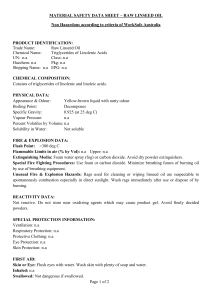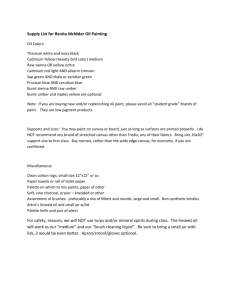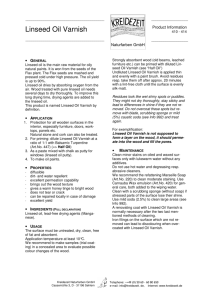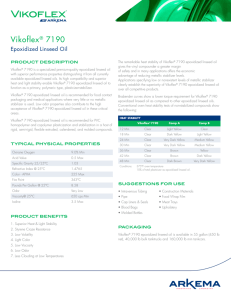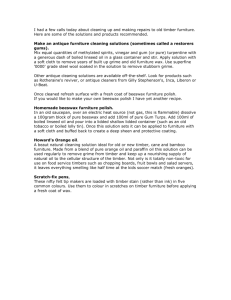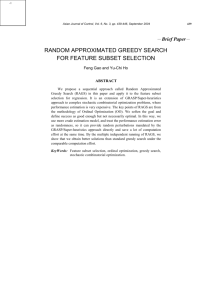The Hazards of Linseed Oil
advertisement
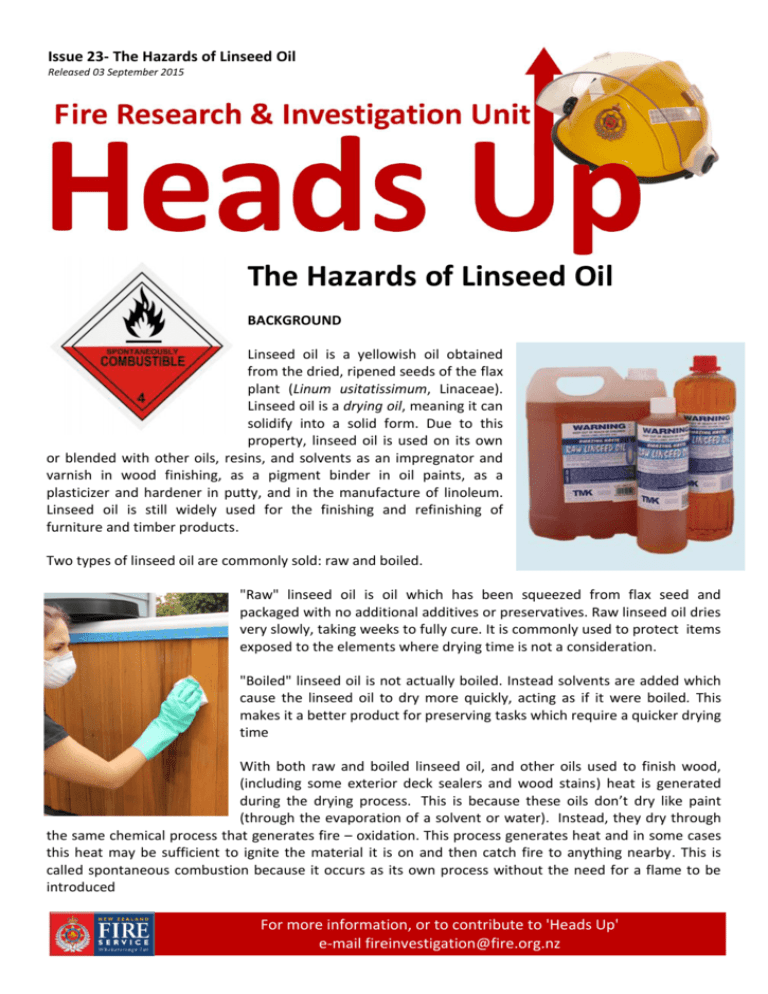
Issue 23- The Hazards of Linseed Oil Released 03 September 2015 The Hazards of Linseed Oil BACKGROUND Linseed oil is a yellowish oil obtained from the dried, ripened seeds of the flax plant (Linum usitatissimum, Linaceae). Linseed oil is a drying oil, meaning it can solidify into a solid form. Due to this property, linseed oil is used on its own or blended with other oils, resins, and solvents as an impregnator and varnish in wood finishing, as a pigment binder in oil paints, as a plasticizer and hardener in putty, and in the manufacture of linoleum. Linseed oil is still widely used for the finishing and refinishing of furniture and timber products. Two types of linseed oil are commonly sold: raw and boiled. "Raw" linseed oil is oil which has been squeezed from flax seed and packaged with no additional additives or preservatives. Raw linseed oil dries very slowly, taking weeks to fully cure. It is commonly used to protect items exposed to the elements where drying time is not a consideration. "Boiled" linseed oil is not actually boiled. Instead solvents are added which cause the linseed oil to dry more quickly, acting as if it were boiled. This makes it a better product for preserving tasks which require a quicker drying time With both raw and boiled linseed oil, and other oils used to finish wood, (including some exterior deck sealers and wood stains) heat is generated during the drying process. This is because these oils don’t dry like paint (through the evaporation of a solvent or water). Instead, they dry through the same chemical process that generates fire – oxidation. This process generates heat and in some cases this heat may be sufficient to ignite the material it is on and then catch fire to anything nearby. This is called spontaneous combustion because it occurs as its own process without the need for a flame to be introduced For more information, or to contribute to 'Heads Up' e-mail fireinvestigation@fire.org.nz For spontaneous combustion to occur, enough heat must accumulate so fire can start. You would never see a piece of furniture spontaneously combust because the oil oxidizes in open air so the surface never even gets warm to the touch. But a pile of oil-soaked rags can. In every case of spontaneous combustion of drying oils that we have found, the cause has been a pile of oil soaked rags. It seems that, as the oil oxidizes, the rags act as an insulator, allowing the oxidizing oil to become hot enough to cause the cloth to smoke and eventually ignite. The bigger the pile, the greater the possible heat and the greater the risk. Temperature is also a factor. The warmer it is, the quicker the rags can reach ignition temperature. INCIDENT DETAILS On a hot afternoon , firefighters were called to a spa pool on fire which was threatening a house. On arrival they found the spa pool destroyed and the fire growing rapidly. After the fire was extinguished it was determined that the fire had started on the deck which surrounded the spa pool. The owners were spoken to and confirmed that they had been using linseed oil on outdoor furniture , applying it with a rag which had been left "scrunched up " on the deck. This was the point that fire investigators identified as the point of origin for the fire. The rag had been in this location for approximately 15 hours prior to the fire being discovered. LESSONS LEARNED/RECOMMENDATIONS Store rags in a non combustible container (metal) with a close fitting lid, away from the house and combustible materials Rags soaked with linseed or other drying oils may smoulder for several hours before flames are visible Rags used with linseed oil should be allowed to dry completely in a safe place, away from flammable materials . The best way to achieve this is to lay the rags out flat on a concrete driveway and allow them to completely dry off. INFORMATION SOURCE NZ Fire Service Fire Research and Investigation Unit For more information, or to contribute to 'Heads Up' e-mail fireinvestigation@fire.org.nz
